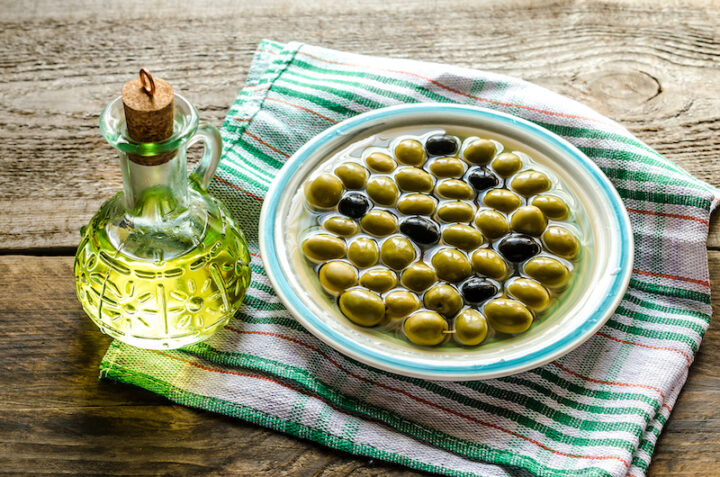So deeply intertwined are olives and Italian cuisine that it is almost impossible to imagine one existing without the other. The word for these delectable oval fruits in Italian is oliva (feminine, plural: olive) whereas the tree which produces them is called olivo (masculine, plural: olivi).

Did you know that…?
An alternative word for oliva is uliva but it is no longer used in modern Italian. The tree, on the other hand, may be called either olivo or ulivo.
Even more well-loved than olives themselves is the liquid fat they produce, called olio d’oliva or olio di oliva (olive oil) in Italian. Produced by pressing whole olives and extracting the oil, it is commonly used as a cooking oil, salad dressing or ingredient in some cosmetics and soaps. Extra virgin olive oil is known as olio extravergine d’oliva or olio evo for short.

Scegliere il momento giusto per raccogliere le olive incide sulla qualità dell’olio.
Choosing the right time to harvest the olives affects the quality of the oil.
Olives can be broadly divided into two types – olive nere (black olives) and olive verdi (green olives). The difference all comes down to their ripeness: green olives are unripe (acerbe), whereas black olives are ripened (in maturazione) before being harvested. Both varieties are cured before being packed and eaten to dampen their strong bitter flavour.
The word oliva can also refer to the colour olive, which is a dark greenish yellow shade.
If you describe the shape of an object such as a button or headphones as being a oliva, the implication is that it is egg-shaped (or more literally, olive-shaped).
Heather Broster is a graduate with honours in linguistics from the University of Western Ontario. She is an aspiring polyglot, proficient in English and Italian, as well as Japanese, Welsh, and French to varying degrees of fluency. Originally from Toronto, Heather has resided in various countries, notably Italy for a period of six years. Her primary focus lies in the fields of language acquisition, education, and bilingual instruction.


